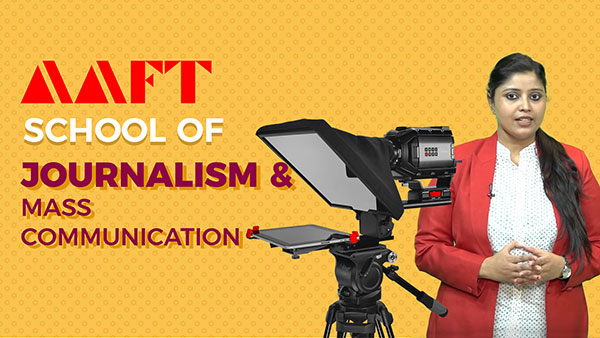The Role of Media in Crisis and Disaster Management
Media is becoming a booming career option today. As a result, the demand for journalism and mass communication courses after 12th grade is becoming prevalent. These courses provide invaluable skills in crisis and disaster management, such as identifying incident causes and spreading awareness about natural disasters.
In this blog, we will raise the spotlight on the critical roles of Media and journalism in crisis and disaster management—what are their roles and importance, the challenges faced, and more. Let’s dive in!
The Essential Roles of Media During Disasters
Media professionals’ after completing their mass communication courses after 12th, are critical in keeping audiences informed during natural disasters. A few of their other essential roles include:
- Ensuring accurate and timely information reaches the public.
- Helping people comprehend the severity of the situation, know what actions must be taken, and engage them in ongoing events.
- Making it easier for authorities to communicate emergency alerts, safety instructions, and updates.
- Bridging emergency responders and the public, creating a unified disaster response.
- Encouraging a culture of preparedness by emphasizing the effects of disasters and presenting tales of resiliency and recovery.
Challenges Faced by Media in Crisis Situations
In addition to their roles in disaster management, these professionals might also need to encounter certain challenges in such unforeseen situations, which are as follows:
- Misinformation Spread: In a frantic situation, incorrect or incomplete information can propagate like wildfire, leading to confusion and panic among the public.
- Verification Difficulties: Journalists often fail to verify facts quickly due to slow or no response from official sources. This can lead to errors and reduce the media’s credibility.
- Safety of Journalists: Reporters frequently risk their lives to provide authentic information in conflict zones, natural disasters, and other highly hazardous settings.
- Ethical Dilemmas: Journalists frequently face ethical difficulties when choosing between publishing sensitive material or graphic images that could have serious consequences for those involved.
- Resource Constraints: Resource limitations, including those related to technology, finance, or staff, may prevent media organizations from providing thorough and timely reporting.
How Media Saves Lives During Disasters
Do you want free career counseling?
Ignite Your Ambitions- Seize the Opportunity for a Free Career Counseling Session.
- 30+ Years in Education
- 250+ Faculties
- 30K+ Alumni Network
- 10th in World Ranking
- 1000+ Celebrity
- 120+ Countries Students Enrolled
Media can save lives during a disaster in a number of ways. It can help you provide life-saving precautionary measures and prevent the spread of fake news through informed news and updates. In addition, the other ways include:
- Disaster Lifeline: Mass communication delivers factual and timely information to the public.
- Understanding Severity: They help people understand the gravity of a situation, signal them safety precautions, and guide them to safe zones or evacuation routes.
- Real-Time Updates: Real-time updates from news broadcasts and social media platforms can warn communities of any kind of impending dangers.
- Vital Link Between Responders and Public: Mass communication is a vital link between emergency responders and the public, disseminating emergency alerts and instructions from authorities.
- Counteract Misinformation: Effective media communication, especially professionals completing the mass communication courses after 12th can counteract misinformation and panic by providing verified and consistent messages, helping prevent chaos and confusion among the public.
- Increase Community Solidarity: Mass media can increase a culture of disaster preparedness and a sense of community solidarity by disseminating instances of resiliency and recovery.
- Strengthens Safety and Resilience: The general public and first responders depend widely on mass communication to interpret emergency warnings and government directions.
Frequently Asked Questions (FAQs)
1. Why Media Coverage Is Important in Disaster Situations?
Media coverage is a communication link between emergency responders and the affected community. It raises awareness, educates the public on safety precautions, and coordinates rescue and relief operations.
2. How Can Media Control Misinformation and fake news during disasters?
The media outlets share only verified information from credible sources and utilize monitoring tools to identify and curb false news. Moreover, they promote digital literacy to help people differentiate easily between accurate and misleading information.
Book Now →
3. What Skills Are Needed for Media Careers in Crisis Management?
Some of the vital skills are excellent writing and verbal communication, the ability to cope with high-pressure situations and verify data quickly, competence in digital and social media tools, and expertise in crisis communication techniques.
Conclusion
We hope you understand the role of Media in crisis and disaster Management. After completing the journalism and mass communication courses after 12th grade, mass communication proves to be a vital asset in disaster management. It helps save lives by delivering reliable, accurate, and timely information and real-time updates.
So, if you are an aspirant and looking to pursue a successful career in the field of mass communication and journalism, consult our AAFT team right away!
Do you want free career counseling?
Ignite Your Ambitions- Seize the Opportunity for a Free Career Counseling Session.Related Blogs
How to Become a Sports Journalist: Skills, Education, and Career Path
How to Become a News Anchor: Your Ultimate Guide
Certificate News Anchoring and Reporting Course: Why You Should Consider
BJMC Courses After 12th: Course Details, Fee and Career Opportunity
Understanding Photojournalism – Courses, Career Path and Key Skills

AAFT has been providing the world with limitless creativity and expression since 1993! Through a dynamic and industry-driven curriculum, AAFT provides engaging and captivating articles to persuasive blogs and empowers its readers to explore diverse avenues of creative media education-related content.











